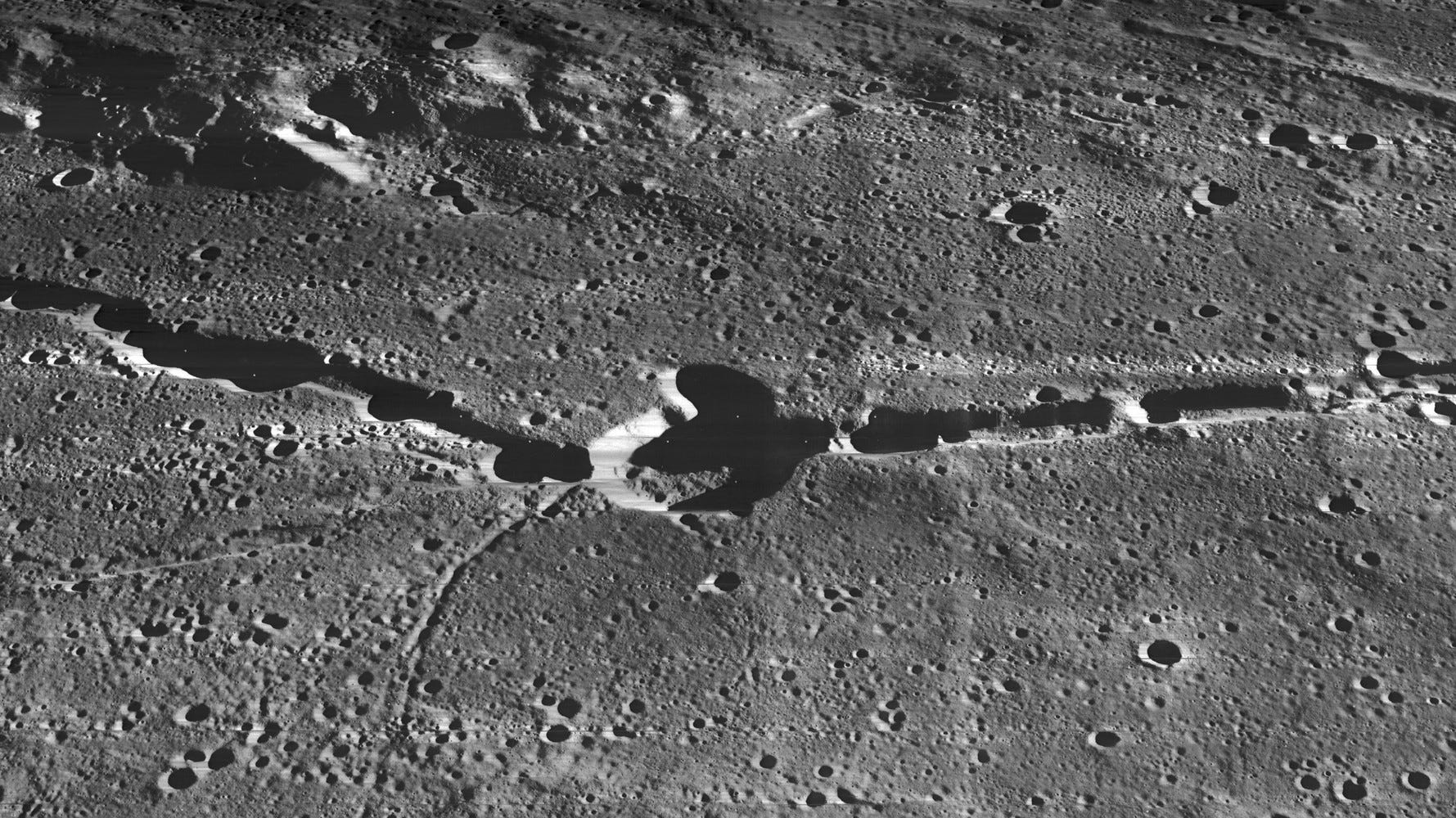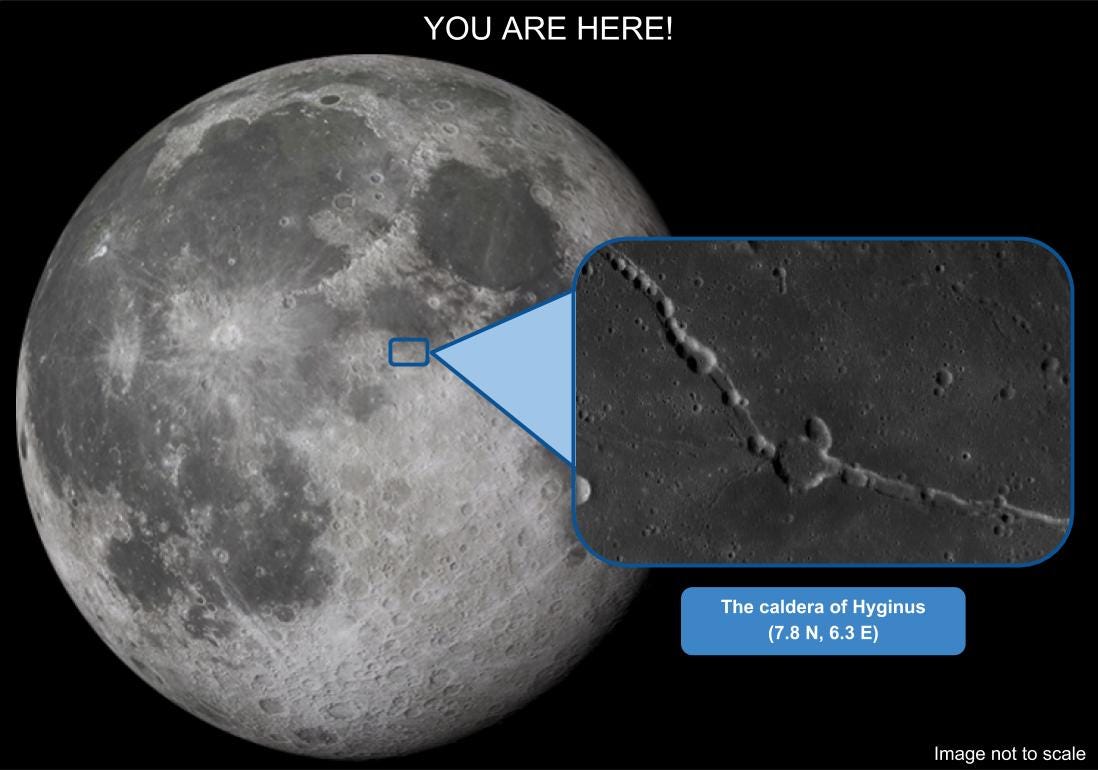A collapsed volcanic feature on the Moon
The caldera of Hyginus.
Seen here is a caldera, a rare type of lunar crater. The caldera of Hyginus and the accompanying rilles (channels) on both sides are actually collapsed volcanic features.

The craters that we are used to seeing on the Moon are formed by asteroid/cometary impacts. But a caldera forms when magma from the lunar interior rises above and tries to escape through the lunar crust but fails. The introduction of magma beneath the crust softens the structural foundation on which the crust is resting. This results in a surface collapse, leaving behind a hollow pot like crater—a caldera. See GIF below for visualization.

A paper explaining the origin of Hyginus caldera also says the attached linear rilles formed as collapse features. End-to-end, the collapsed feature runs for about 220 kilometers. The linear rille is similar to the previously covered Rima Ariadaeus.
Hyginus caldera was a candidate landing site for the cancelled Apollo 19 mission. Future lunar missions to Hyginus will reveal important information about the dynamics of such collapse features and may give insight into elusive Ina.

